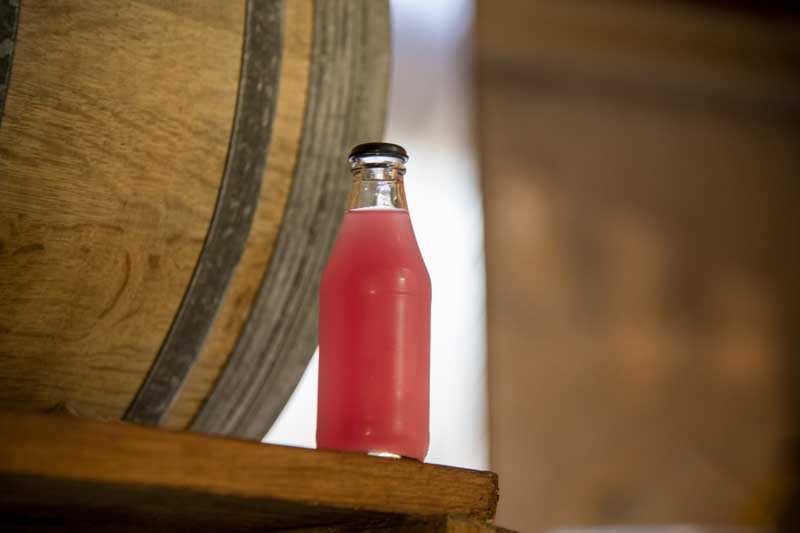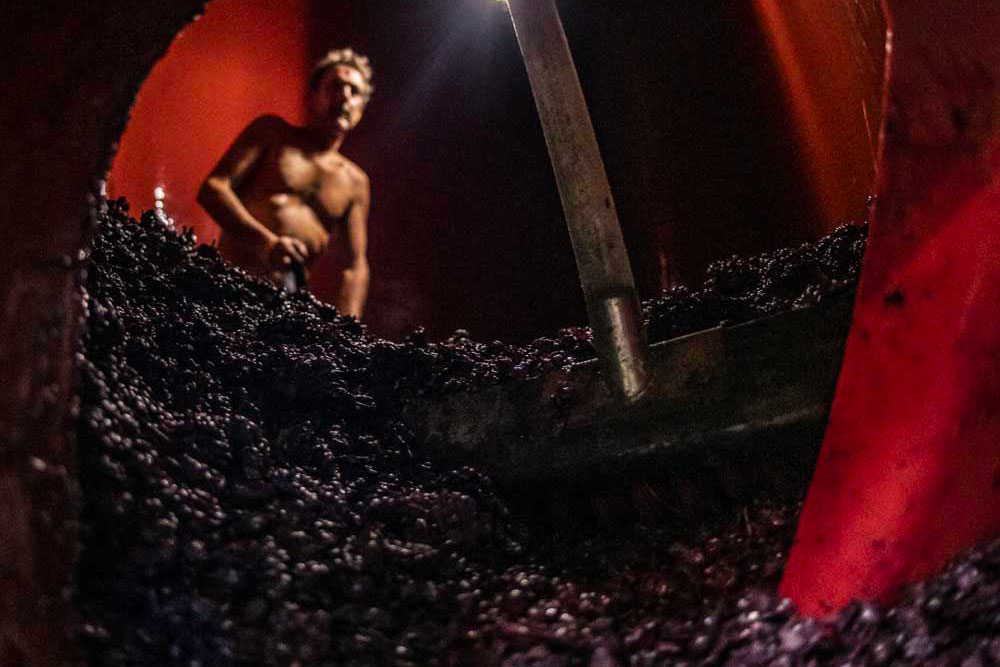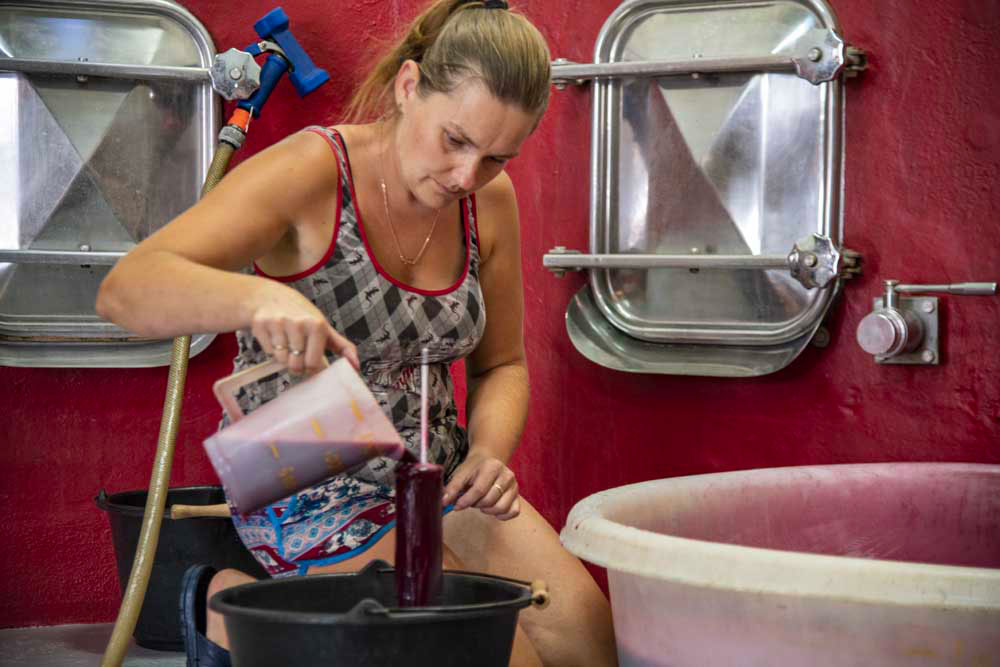Then they are transported, always in whole clusters, to the estate’s cellar.
Here, I make and mature my wines in a very traditional way, distancing myself from the trend towards high-tech methods and standardisation. In this way, terroir effect stemming from my vineyards and my ancient grape varieties can be showcased. Through minimalist procedures in my cellar, I can create wines that reflect their origins, fruit and terroir.



The winemaking process for the red wines
Once in the cellar, the grapes are destemmed and lightly crushed, then placed in tanks. Fermentation lasts for about ten days, followed by hot maceration for several weeks. During maceration, daily pumping over extracts the noble substance contained in the grapes.
This ultra ripe substance imbues my wines with colour, aromas and their tannic, rounded and silky structure. After these few weeks of maceration, the wines need to be racked by letting them drain from the tank and removing the remaining pomace.
L’îvresse des Cimes and wines from the ancient varieties Cinsault, Aramon, Carignan and Mourvèdre, are matured in tanks.
The only exception is the A Contre Courant label which undergoes oxidative maturation under a veil of yeast in used French oak barrels.
The winemaking process for the rosé wine
For my rosé, Sibylline, the winemaking technique changes. The grapes are transported whole to the cellar during the early hours of the day to keep them cool, and go direct to press to extract the juice, known as must.
This must is immediately cooled and the coarser lees are removed.
Fermentation can then begin and occurs very slowly at low temperatures, thereby preserving the full aromatic potential of the wines which are then matured in tanks.

